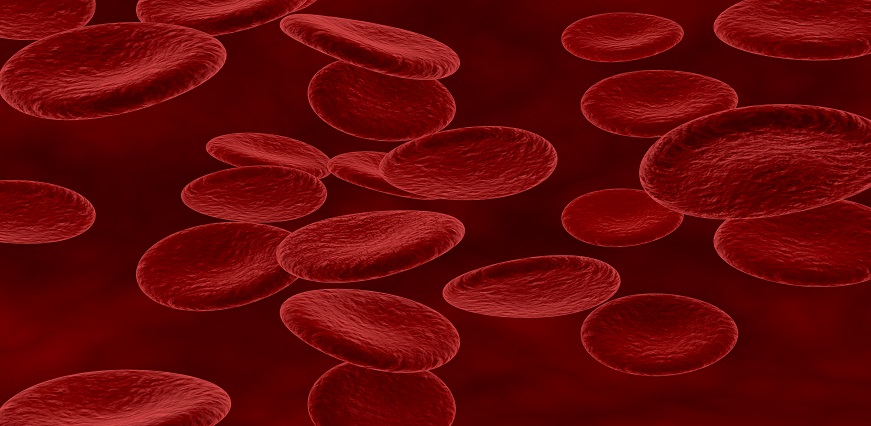When the skin is punctured or injured, one starts bleeding, and before too much blood is lost through the open wound, blood cells begin clumping together to form a clot, which seals the wound. The damage triggers the platelets in the blood to form a plug around the wound, while circulating plasma proteins, called clotting factors, begin a chain reaction, which results in the formation of a clot that blocks the open wound.
While blood clots are lifesaving when they stop bleeding, but they can be dangerous too if they start forming when they are not needed. Such formations may indicate issues with the clotting factors or some other medical condition. If a person bleeds easily or gets clots when they shouldn’t, they may be asked to undergo a prothrombin time test (PT/INR test), as a part of a coagulation screen or panel.
What is the PT/INR Test?
Prothrombin is a protein that is produced by the liver and is one of the clotting factors (Clotting Factor II) found in the blood. The primary function of prothrombin is catalysing the conversion of fibrinogen into fibrin during clotting, which it does by converting into its active form, thrombin. In normal circumstances, prothrombin only changes into thrombin when the tissues or circulatory system have been injured and abnormal levels of the same may lead to unnecessary formations of blood clots or bleeding disorders.
The prothrombin time test (PT) is performed to evaluate the clotting tendency of blood. On the other hand, the International Normalised Ratio (INR) is a derived measure that is used to measure the time taken by plasma to form a clot. The test is performed to check for the presence of five clotting factors (factors I, II, V, VII, and X) and whether they are functioning well together. The PT/INR test is generally prescribed as a part of the liver function test or of a coagulation screen, which also includes the blood test for PTT (partial thromboplastin time test), aPTT (activated partial thromboplastin clotting time test), BT (bleeding time test), and CT (clotting time test).
About the Other Coagulation Tests:
The causes of high aPTT levels can include factor VIII, IX, or XII deficiency, or liver disease, while a high prothrombin time may be because of one being on blood thinners like warfarin or a deficiency of factor VII.
That is why a coagulation screen includes a range of tests that analyse the body’s ability to form clots and the time taken to do so, offering a comprehensive overview of the body’s clotting ability or inability.
While the PT test analyses factor II, the PTT blood test evaluates the function of clotting factors VIII, IX, XI, and XII. On the other hand, the aPTT is considered to be a more sensitive form of the PTT and involves the use of an activator for a narrower reference range. The bleeding time test evaluates how long blood vessels of the skin take to close and stop bleeding and is performed in a different manner as compared to other blood tests.
Together, these tests may be performed to confirm normal clotting time and function before one undergoes a procedure or surgery, to detect bleeding disorders or conditions like DIC, or to monitor the effects of prescribed medication that may affect blood clotting.
The price of the PT/INR test will also vary based on the panel it is a part of.
Why is the PT/INR Test Prescribed?
Apart from analysing the function of prothrombin, the is used to diagnose a variety of disorders and conditions that may influence the body’s normal clotting time, like liver diseases, haemophilia, certain cancers, immune system diseases, etc. For people who are on blood thinning medication (warfarin therapy), the INR test helps determine the correct dosage they require. Swelling or redness in the feet or arms, blurry vision, headaches, angina, severe fatigue, etc. may be symptoms of low INR, signalling the need for a higher warfarin dose.
On the other hand, cuts that do not stop bleeding, bleeding gums (when brushing), black or bloody stool, rust-coloured or bloody urine, etc. may indicate high INR, where treatment would require modification to reduce the warfarin dosage.
In a PT/INR test, the normal range for prothrombin time is generally 11-13.5 seconds and 0.9 to 1.1 for INR. But the PT/INR normal range for prothrombin time and INR also has to be adjusted based on individual factors on a case-to-case basis.
Symptoms to Look Out For
The test is also prescribed to people displaying symptoms of a bleeding disorder or a clotting disorder.
Bleeding Disorder Symptoms:
- Heavy bleeding that cannot be explained
- High tendency to bruise
- Nose bleeds that are unusually heavy
- Blood in the urine
- In women, unusually menstrual bleeding
Clotting Disorder Symptoms:
- Pain, tenderness, or swelling in the legs
- Red streaks or redness on the legs
- Breathing issues
- Rapid heartbeat
- Pain in the chest
Understanding the PT/INR Test Report
If one is on warfarin therapy, the test results will most probably be in INR levels and if they are not on warfarin, the results may focus more on the PT levels. The report may vary from lab to lab. For people on warfarin, low INR levels indicate a risk for dangerous blood clots, while high levels may indicate dangerous bleeding risks.
For people who are not on warfarin, low or high prothrombin time levels may indicate various conditions like vitamin K deficiency, liver disease, or a bleeding/clotting disorder.
It is always recommended to consult a doctor with the results for a more comprehensive prognosis.
The prothrombin time test is a crucial diagnostic test that gained a lot of popularity in recent times because of the COVID-19 pandemic, where a majority of patients were at risk of developing bleeding or clotting disorders. The test can go a long way in diagnosing problems associated with clotting and avoiding further complications.













 7982100200
7982100200























 To reach our help desk call 9213188888
To reach our help desk call 9213188888.png)
Comments